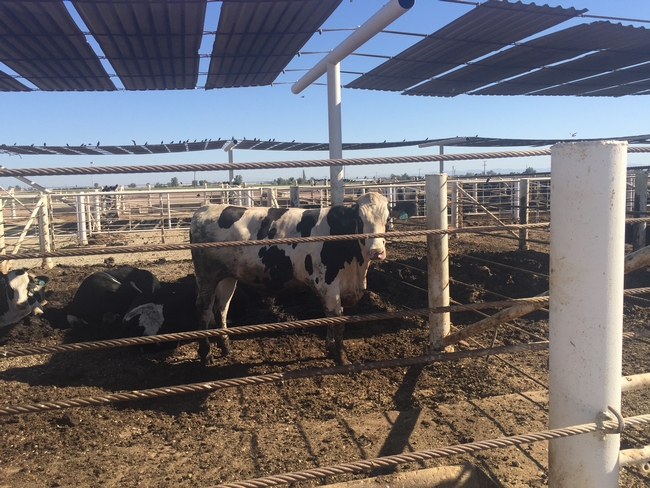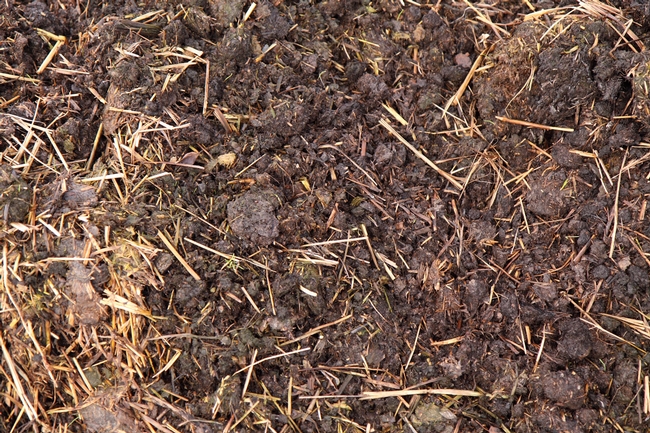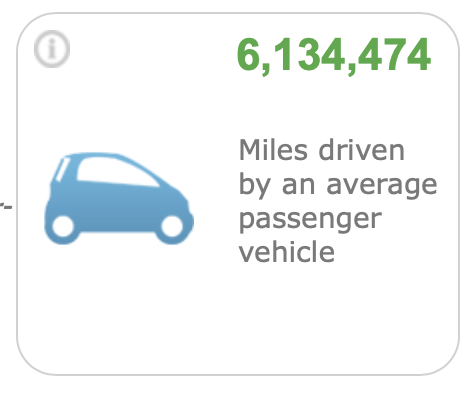You know you have reached the Imperial Valley, located on the southeastern bottom corner of California, when you begin to smell (not carne asada, but you're close) the distinct aroma of cow manure. This smell isn't manure coming from dairy cows as you might think though Imperial County does have two dairies. For the most part, the odor is coming from feedlots spread across Imperial County raising Holstein steers for beef.

With an estimated total of 344,937 cattle[1],and the distinct smell as a reminder, you would imagine that Imperial County ranchers are managing a whole lot of cattle manure. “How are ranchers managing dairy and livestock manure?” has become a top concern for the California Department of Food and Agriculture (CDFA) over the past two decades. This is because 8% of California's Greenhouse Gas (GHG) emissions, mostly methane and nitrous oxide, comes from agriculture, and approximately two thirds of those emissions come from enteric fermentation and manure management of livestock[2].
On the manure management side of ranching, greenhouse gas emissions are largely due to the anaerobic (absent of oxygen) decomposition of volatile solids stored in a lagoon or other predominately liquid anaerobic environments that produce excess methane. In other words, methane is produced in greater quantities when exposed to these wet conditions of collection, treatment, and storage. California, especially in the Central Valley (where 91% of the state's dairy cows are located), utilize freestall barns with flush systems, settling basins, lagoons, and processing pits[3]. According to California Air Resource Board (CARB), by converting these systems to lower sources of manure methane, such as pasture-based management, compost-bedding pack barns, or solid separation, these dairies can reduce that amount of methane released into the atmosphere.
Manure management methods widely used by Imperial County ranchers are considered “alternative manure management methods” by CDFA and other government agencies. Due to the arid-low desert climate and low annual rainfall, Imperial County ranchers already manage dry manure systems that are considered low emissions by Methane Conversation Factors standards. For, instance a 30,000-cattle feedlot using (which is the average size for Imperial County feedlot) using a dry lot manure scraping system, with minimal tractor diesel fuel consumptions for scraping corrals produces about 2,509 Metric Tons of Carbon Dioxide (MTCO2e/yr). Which is equivalent to 6,134,474 miles driven by an average passenger car[4]. In addition to using a scraping manure system, it's also common practice for ranchers to haul their manure to a local compost facility or compost in-house using open solar windrows drying, depending on the feedlot. Composted manure is than often utilized locally or sold as a soil amendment for the farming of forage crops and other commodities.

Cattle will always be a source of methane, however how rancher's management dairy and livestock operations could reduce the overall production of methane. On a regional scale, its fair to say that the Imperial County ranchers are implementing the best low methane manure management practices, while still producing a significant amount of cattle. Imperial County ranchers are always looking for better ways to improve their management, however many ranchers don't fall under the CDFA Alternative Manure Management Program guidelines (because they already use these practices) limiting their ability to access these funding opportunities.
Climate smart agriculture encompasses management practices that increase soil carbon sequestration, reduce greenhouse gas emissions, improve yields and efficiencies, and promotes climate resilience. The California Department of Food and Agriculture (CDFA) supports three funding opportunities in climate smart agriculture: the Healthy Soils Program, the State Water Efficiency & Enhancement Program, and the Alternative Manure Management Program.
In a collaborative partnership, CDFA and UC Agriculture and Natural Resources have teamed up to support 10 community education specialists throughout the state to provide technical assistance and outreach for the climate smart agriculture programs.
[1]https://www.co.imperial.ca.us/ag/docs/spc/crop_reports/2017_Imperial_County_Crop_and_Livestock_Report.pdf
[2]2018 Edition, California Greenhouse Gas Emission Inventory: 2000 – 2016
[3]https://ww3.arb.ca.gov/cc/dairy/documents/08-21-17/dsg1-dairy-101-presentation.pdf
[4]https://www.epa.gov/energy/greenhouse-gas-equivalencies-calculator
